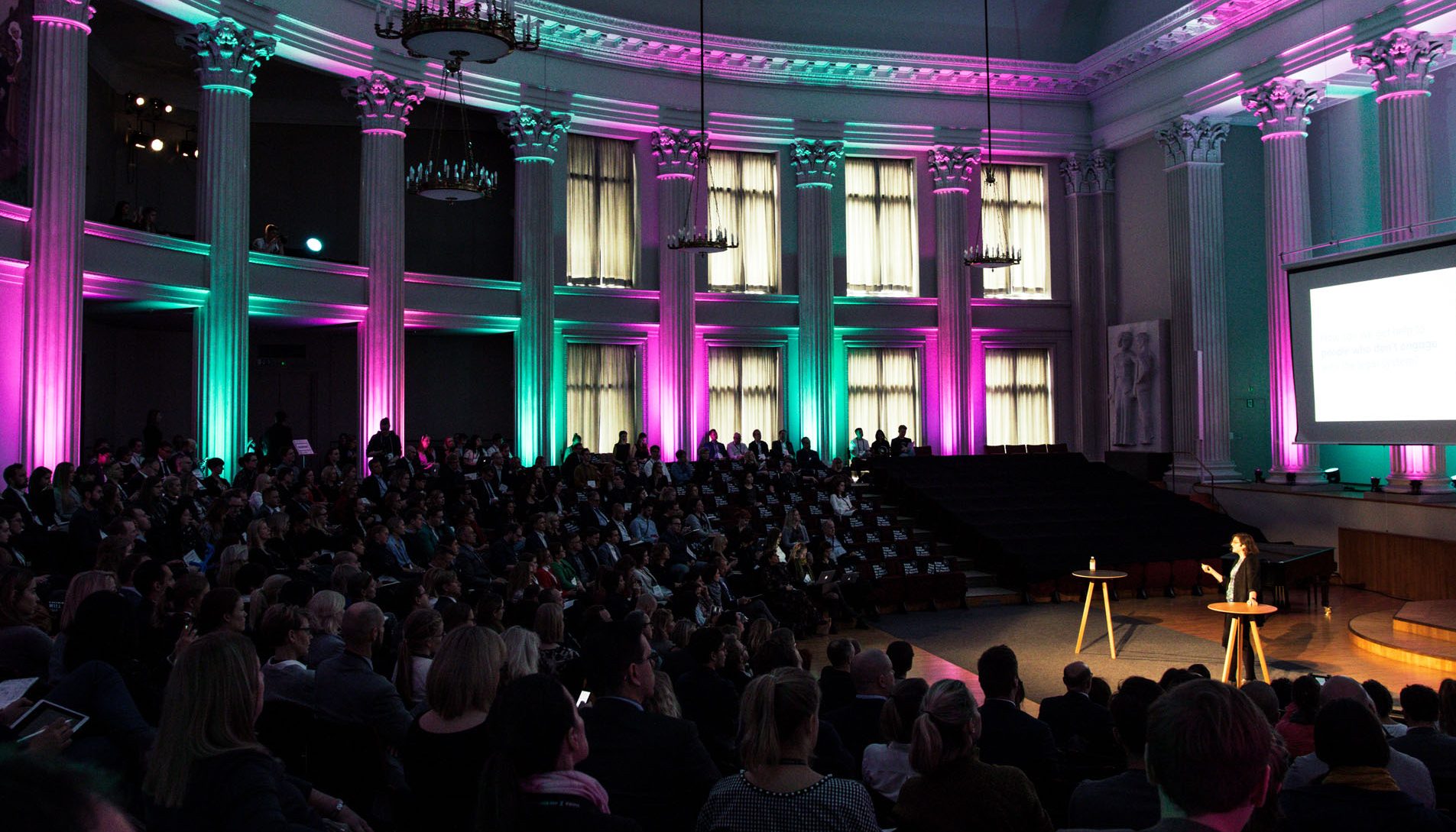How to apply design thinking as a method to serve clients better? What differentiates a good law firm from an average one? Why does diversity matter?
Legal Design Summit 2019 Avokaado’s takeaways.
It’s been a week since we, Pilleriine Alter and Polina Medvedieva, took an early ferry from Tallinn to Helsinki to attend Legal Design Summit. Yes, lucky Estonians – it took us only 2 hours to get to the hotspot of legal innovation with 600 participants from all over the world, including the USA and Australia.
However, it definitely took us more than 2 hours to digest what we’ve learned and what kind of people we’ve met there. As a result, we are happy to share our wrap-up with our innovative lawyers community.
To be said, the density of inspiring and creative minds was off the charts.
The main idea that united all the speakers, as well as attendees, is that we all believe we can #MakeLawBetter. As the law is meant to solve humans’ problems (people’s service!) it has to become more practical, user-friendly and solve the problem all in all. As Prof. Dan Jackson said, the point is not to be a master of the legal profession but to be able to connect law to the Universe.
All attendees gathered under this delightful mission. For us, legaltech pioneers, it was important to see where legal design trends go because both domains require the same enthusiasm for innovation and the leap of faith. As Marco Imperiale mentioned: “Innovation is a step between stubbornness and grit”.
The percentage of practicing lawyers in the audience barely reached 30% according to the hands raised during one of the speeches. However, those practicing lawyers who were present at the summit conquered our hearts by being so curious and eager to innovate and taking the most out of summit. Not to show off but rather to confirm that Avokaado’s mission is going places – we’ve met our clients there as well in the first rows before the stage. Cheers to you, fellows!

What are the key takeaways that Avokaado dig out?
- Why should the legal industry care about design thinking?
Legal design is a client-centric approach to create a specific legal solution using, for example, design thinking methodology. The aim is to use design and visualization so that the end-user or the client understands clearly the process and outcome and value. KPMG Consultant Sebastian Hartman presented the “Next Generation Management Playbook” and emphasized the necessity to meet clients’ needs who look for “tangible, reliable solutions and value-added”. For that, he proposed to re-think an outdated professional business model that is built on billable hours, hierarchical workforce structures. In order to stay competitive and meet client’s needs, the legal industry has to move towards output-oriented compensation models, change the resource allocation and hire outside of traditional law firm career paths.
2. If your firm wants to stand out, forget about excuses, start now!
Nothing to add to Marco’s presentation with a catchy title “10 reasons not to innovate” – only to recap:
-
-
- “Lack of budget” is not an excuse. A good law firm always finds appropriate resources for relevant matters.
- “No guarantee that clients will appreciate innovative tech”. All true if your team does not talk to the clients. A good law firm always keeps up with market demand and won’t be out of the league when its clients want faster and cheaper services.
- “Our competitors don’t do that”. The fact is that annual investment in legal technology companies reached $1 billion this September 2019. Good law firms are already investing in the legaltech tools. They think it’s better to start now rather than later trying to close the gap. Start learning, speaking, testing.
3. Diversity matters!
Diversity is power. Our new friends from French tech company LinkValue emphasize the critical need in involving people of different expertise and backgrounds to foster innovation and design thinking in your legal team. Their team consists of lawyers working together with designers, tech specialists and project managers. They are sure that design thinking is partially about design and mostly about problem-solving. And problems are solved better when approached but as many diverse experts as possible. Remember to include non-legal team members when start innovating which could be both in-house or outsourced experts to get as many perspectives and skills as possible.
These notes are just an iceberg, the 5% of extremely inspiring Legal Design Summit 2019 but hopefully they showed some light and direction to our innovative lawyers’ community who could not make to attend. One is for sure – legal design thinking is here and will change the practice of law, make it much more client-centric and collaborative across different business sectors.
👉 Set up your first document workflow: Get started for free now.
Avokaado is a pioneer in digitizing legal services. Our team is an expert in building DIY, knowledge management and collaboration platforms. 👉 Request a demo and we’ll show how you can start delivering cutting-edge solutions today.
👇 Liked the article? Subscribe to a Monthly Newsletter below to be notified of the next blog update.
-
